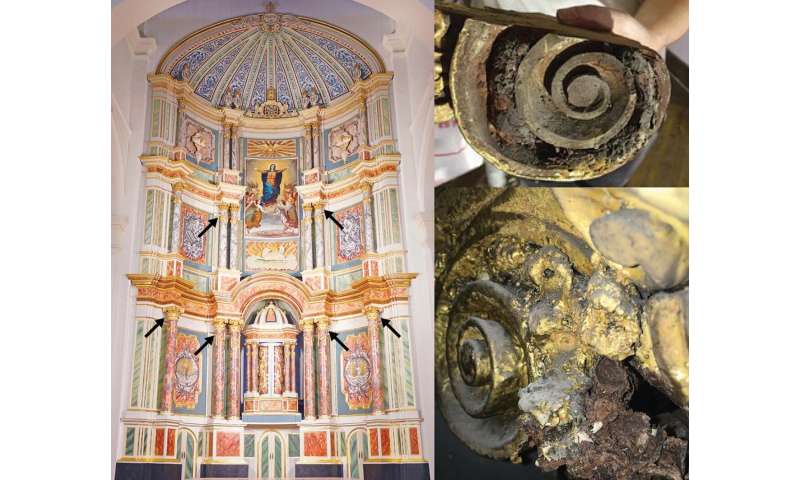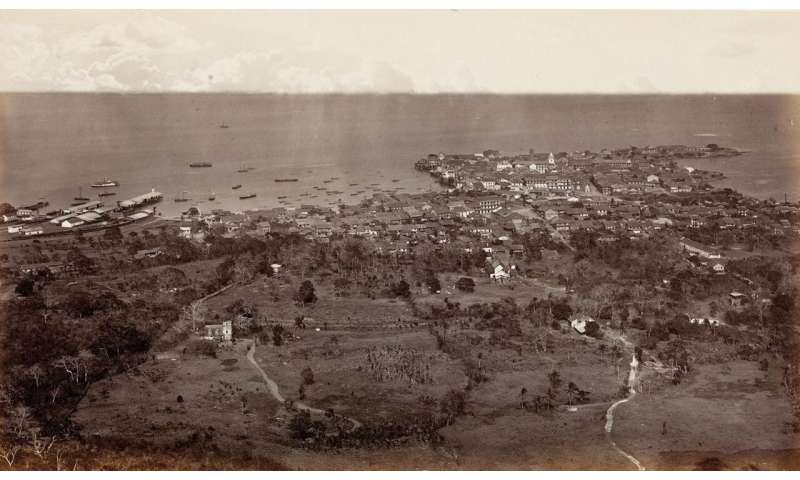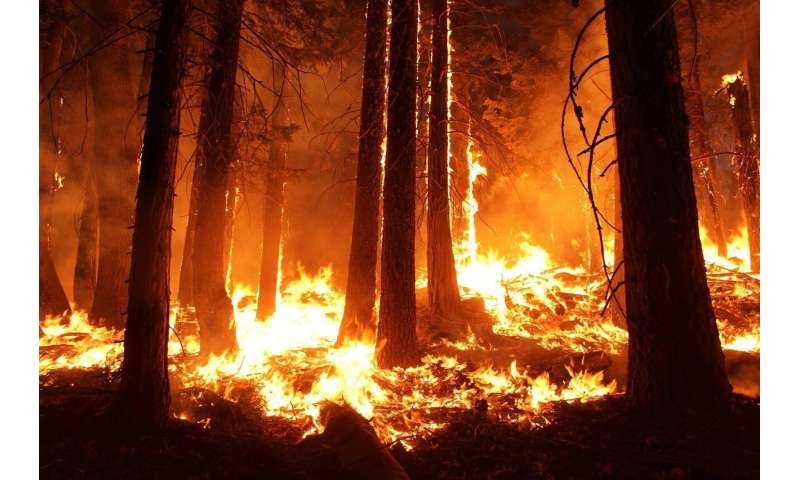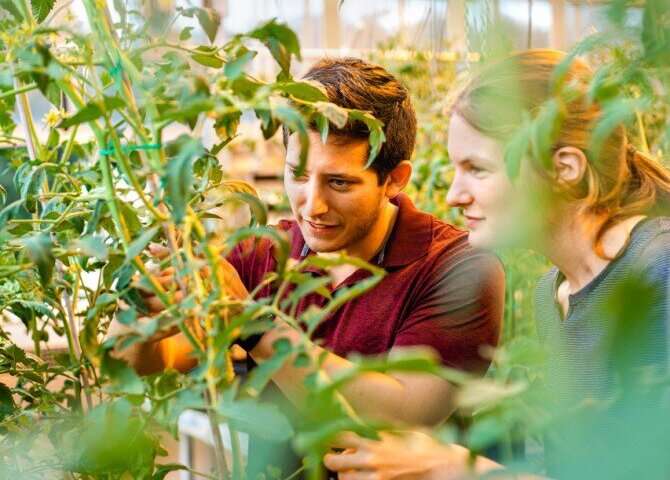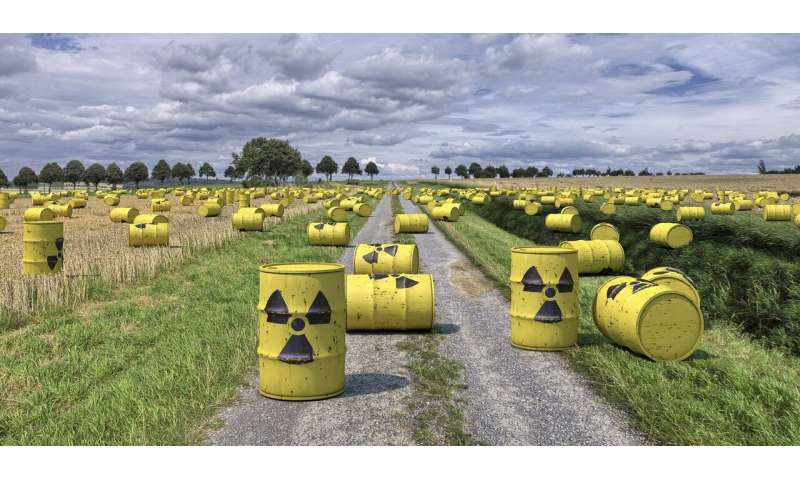Invasion Day protests held across nation and in London to challenge Australia Day date
Updated
Rallies have been held across the country to oppose the celebration of Australia Day on January 26, which protesters say should be a day of mourning.
Key points:
- Australia Day is considered a day of mourning by many Indigenous and non-Indigenous people
- Demonstrators are calling for a rethink on how the day is celebrated
- Protesters have gathered at a statue of Captain Cook in London
Invasion Day or Survival Day demonstrations have gained momentum in recent years and coincided with a push to move Australia Day to a date considered more inclusive.
January 26 marks the anniversary of the First Fleet's arrival in Port Jackson, New South Wales, which is regarded by many Indigenous and non-Indigenous Australians as the beginning of colonial oppression.
Tens of thousands of people gathered for Invasion Day rallies in the nation's capital cities including Melbourne and Sydney, where demonstrators congregated in a packed Hyde Park.
Many protesters wearing T-shirts featuring the Aboriginal flag, and carrying signs and placards, began Saturday's rally by watching a traditional smoking ceremony.
Speakers made a plea to stop black deaths in custody and increase Aboriginal ownership of land.
A march was then led by Aboriginal families who had lost loved ones in custody, alongside rugby league star Latrell Mitchell.
Mitchell, who was last year subjected to racial abuse, performed a short traditional dance at the protest, with South Sydney Rabbitohs team mate Cody Walker.
Mitchell said he was attending the rally to show solidarity with the Aboriginal community.
"I want her to know how much her dad is doing good."
He urged the non-Indigenous community to learn about Aboriginal culture and history.
"Survival Day it's a celebration of our survival, our people. Obviously it's good to see people getting amongst it," Mitchell said.
"There's a lot to come and a lot to learn for people who don't understand."
 PHOTO: Thousands packed into Sydney's Hyde Park to protest against Australia Day. (ABC News: Isabella Higgins)
PHOTO: Thousands packed into Sydney's Hyde Park to protest against Australia Day. (ABC News: Isabella Higgins)
Bundjalung elder Gwen Williams-Heckling travelled for 10 hours from Casino in NSW's north to attend the rally.
"Together we draw strength and celebrate our continuing culture despite our dispossession.
"We need a new day because we can never celebrate the day of invasion."
 PHOTO: Gwen Williams-Heckling travelled for 10 hours to attend the Sydney rally. (ABC News: Isabella Higgins)
PHOTO: Gwen Williams-Heckling travelled for 10 hours to attend the Sydney rally. (ABC News: Isabella Higgins)Huge rallies in Melbourne and Brisbane urging social justice
Tens of thousands of people turned out at another protest in Melbourne, with crowds chanting: "Always was, always will be Aboriginal land".
 PHOTO: Tens of thousands of people turned out at an Abolish Australia Day gathering in Melbourne. (ABC News: Joseph Dunstan)
PHOTO: Tens of thousands of people turned out at an Abolish Australia Day gathering in Melbourne. (ABC News: Joseph Dunstan)
The Abolish Australia Day gathering outside Parliament House was organised by the Warriors of the Aboriginal Resistance.
The group called for an end to "systematic racism" and what it described as "racist and discriminatory" practices in law enforcement.
It also demanded better protection of sacred cultural and environmental sites, which it said were being destroyed by mining companies.
In Brisbane's CBD protesters demonstrated in front of a statue of Queen Victoria before marching across the Victoria Bridge to Musgrave Park in West End.
Many children were present at the rally, and members of the crowd performed traditional dancing.
The demonstration was mostly peaceful, except for a minor scuffle in Queens Gardens in which a member of the crowd became angry and briefly took to the stage.
Police subdued the man and moved him on, before a succession of speakers continued the rally.
In regional Victoria, Ballarat held its first Survival Day smoking ceremony, with more than 1,000 people watching from the banks of Lake Wendouree at dawn.
Organiser Nikki Foy said she was spellbound as she watched droves of people arrive in the dark to the only early morning event of its kind outside metropolitan areas.
"I was expecting maybe 50 people … I'm absolutely overwhelmed by the attendance here," she said.
 PHOTO: Co-chair of Reconciliation Victoria, Belinda Duarte, at the ceremony in Ballarat. (ABC News: Charlotte King)
PHOTO: Co-chair of Reconciliation Victoria, Belinda Duarte, at the ceremony in Ballarat. (ABC News: Charlotte King)
The council-backed event was hosted by the co-chair of Reconciliation Victoria, Ballarat-born Belinda Duarte, along with a number of long-time members of Ballarat's Aboriginal community.
A minute's silence was held as part of the ceremony, and some in the crowd openly wept as speakers addressed the history of colonial dispossession and read out the dates and locations of 19th century massacres.
London demonstrators gather at Captain Cook statue
This year, the protests have again gone global, with a group in London gathering at the statue of Captain Cook at The Mall, holding placards with such words as "no pride in genocide" and "sovereignty never ceded".
 PHOTO: Protesters opposed to Australia Day gather at the statue of Captain James Cook in The Mall in London. (Twitter: James Taylor / London Australia Solidarity)
PHOTO: Protesters opposed to Australia Day gather at the statue of Captain James Cook in The Mall in London. (Twitter: James Taylor / London Australia Solidarity)
The group, London Australia Solidarity, said it stood "with First Nations people".
"London is the seat of empire and represents the beginning of colonialism," the group tweeted.
In Canberra, about 500 people joined a Survival Day march from the CBD over Commonwealth Bridge to the lawns of Parliament House.
Justine Brown from the United Ngunnawal Youth Council addressed the crowd, acknowledging the resilience of Indigenous people.
"This is the year that we come together as Australia's first people and non-Indigenous people, as Australians, as we should be," she said.
"We need a day where we feel safe, where non-Indigenous people feel safe to celebrate a nation that's great."
 PHOTO: A gathering in Darwin was told the event was more about reconciliation than protest. (ABC News: Alan Dowler)
PHOTO: A gathering in Darwin was told the event was more about reconciliation than protest. (ABC News: Alan Dowler)
Large crowds gathered for an event commemorating the history of Aboriginal peoples in Darwin today.
There were dances and a smoking ceremony for those in attendance.
Organiser Jessie Bonson said the event was more a reconciliation event, rather than a rally or protest.
"This event is mainly about bringing our community together to open up a bit more of a discussion, to listen to our traditional owners — the Larrakia people — about how we should move forward together as a nation," she said.
 PHOTO: Larrakia traditional owner June Mills addresses an Australia Day crowd in Darwin. (ABC News: Alan Dowler)
PHOTO: Larrakia traditional owner June Mills addresses an Australia Day crowd in Darwin. (ABC News: Alan Dowler)
Larrakia traditional owner June Mills delivered the Welcome to Country.
She said many people were still dealing with the effects of colonisation.
"You're not sorry when you continue down the line that you've been doing for 230 years. You're not sorry, you're not fooling anybody," she told the crowd.
In Hobart, protesters marched along Elizabeth Street, headed for the Parliament House lawn.
Tasmanian Aboriginal elder Jim Everett said he felt Australia was still a colony, and said more non-Indigenous people needed to speak out.
"We can't just run campaigns ourselves and get knocked back. We need your voices to start coming out," he said.
"When you hear about the atrocities against the Aboriginal people in Australia, and the fact that the successive governments have not moved towards healing these divisions …"
A more subdued Survival Day event was organised at the Tandanya National Aboriginal Cultural Institute in Adelaide's CBD.
Institute chief executive Dennis Stokes said while many might regard the event as an occasion for shame, it was not necessarily meant to be confrontational.
 PHOTO: Many people in Sydney's Hyde Park wore shirts featuring the Aboriginal flag. (ABC News: Sarah Collard)
PHOTO: Many people in Sydney's Hyde Park wore shirts featuring the Aboriginal flag. (ABC News: Sarah Collard)
Mr Stokes said it was instead focused on cross-cultural understanding.
"We don't see it as a protest, we see it as an inclusive event for the whole community, not just the Indigenous community, and we want to highlight Aboriginal and Torres Strait Islander culture," he said.
"We want people to come down, especially non-Indigenous people, we want them to come down and have a look and see what we do."
 PHOTO: The words Abolish Australia Day have been projected onto a monument in London. (Twitter: @x_feral / London Australia Solidarity)
PHOTO: The words Abolish Australia Day have been projected onto a monument in London. (Twitter: @x_feral / London Australia Solidarity)
Mr Stokes said Tandanya — which is described as Australia's oldest Aboriginal-owned and managed multi-arts centre — did not have a firm view on whether Australia Day should fall on another date.
"People have differences of opinion. Most people think that it's a day that should be changed but I think if we have a healthy debate about it we can figure out what to do," he said.
Topics: australia-day, event, aboriginal, indigenous-aboriginal-and-torres-strait-islander, indigenous-culture, indigenous-protocols, indigenous-policy, community-and-society, community-and-multicultural-festivals, adelaide-5000, sa, hobart-7000, tas, melbourne-3000, vic, perth-6000, wa, brisbane-4000, qld, darwin-0800, nt, sydney-2000, nsw, canberra-2600, act, england








